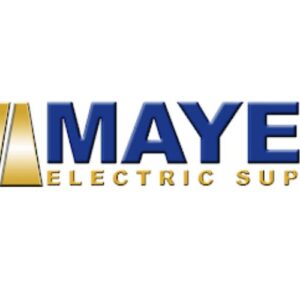Heat Pump Electrical Wiring: A Comprehensive Guide
Heat pumps are becoming increasingly popular as an energy-efficient and cost-effective way to heat and cool your home. However, installing and wiring a heat pump can be a complex process that requires a thorough understanding of electrical codes and safety practices. This comprehensive guide will walk you through the essential aspects of heat pump electrical wiring, ensuring you have the knowledge to ensure a safe and efficient installation.
Understanding Heat Pump Electrical Requirements
Before embarking on any electrical work, it’s crucial to understand the specific electrical requirements for your heat pump. These requirements can vary depending on the model and size of the heat pump, as well as the climate in your region. Consult the manufacturer’s installation manual for detailed instructions and specifications.
Voltage and Amperage
Heat pumps typically operate on a standard 240-volt circuit, although some models may require higher voltage. The amperage draw of the heat pump will depend on its heating and cooling capacity. You’ll need to ensure your electrical panel has sufficient capacity to handle the additional load.
Circuit Breaker Size
The circuit breaker for your heat pump should be sized appropriately to protect the wiring and prevent overloads. The breaker size will be specified in the manufacturer’s instructions. It’s important to use the correct size breaker to ensure proper protection.
Wire Gauge
The wire gauge required for your heat pump will depend on the amperage draw and the length of the run. Larger amperage requires thicker wire to handle the current. Consult the National Electrical Code (NEC) for specific wire gauge requirements based on the amperage and distance.
Grounding
Grounding is essential for safety. All heat pump components, including the outdoor unit, indoor unit, and wiring, must be properly grounded. This helps prevent electrical shocks and fires.
Heat Pump Wiring Components
A typical heat pump installation involves various electrical components, each playing a crucial role in the system’s operation. Understanding the function of these components is essential for proper wiring.
- Air Handler: The indoor unit of the heat pump, containing the blower motor, fan, and evaporator coil. It’s wired to the thermostat and control system.
- Outdoor Unit: The compressor, condenser, and fan motor are housed in the outdoor unit. It’s wired to the air handler and power source.
- Thermostat: The thermostat acts as the control center for the heat pump, allowing you to set desired temperatures and modes.
- Control System: The control system manages the operation of the heat pump, including fan speeds, defrost cycles, and other functions.
- Disconnecting Means: A disconnect switch must be installed within sight of the heat pump’s electrical equipment. This allows you to isolate power to the unit for maintenance or emergencies.
Steps for Wiring a Heat Pump
Wiring a heat pump involves several steps, and it’s crucial to follow the proper procedures for a safe and efficient installation. Here’s a step-by-step guide:
1. Preparation
- Turn Off Power: Before working with electrical components, always turn off the power at the circuit breaker.
- Gather Materials: Ensure you have all the necessary materials, including wire, connectors, conduit, junction boxes, and electrical tape.
- Read Instructions: Carefully review the manufacturer’s installation manual for specific wiring diagrams and instructions.
2. Running the Wires
- Conduit: Use conduit to protect the wiring and prevent damage. Conductors should be run in conduit or cable that’s rated for the environment.
- Wire Size: Use the correct wire gauge as specified in the manufacturer’s instructions and the NEC code.
- Wiring Diagram: Follow the wiring diagram provided by the manufacturer to connect the wires to the correct terminals.
3. Connecting Wires
- Terminal Blocks: Use terminal blocks to connect the wires neatly and securely.
- Wire Stripping: Strip the insulation from the wire ends to expose the copper conductors.
- Crimping: Use wire connectors (crimps) to secure the wire connections.
- Electrical Tape: Wrap the connections with electrical tape to provide insulation and protect the wires from moisture.
4. Grounding
- Ground Wire: Connect a dedicated ground wire to the ground bus in the electrical panel.
- Grounding Rod: Drive a grounding rod into the ground and connect it to the ground wire.
- Ground Fault Circuit Interrupter (GFCI): Install a GFCI outlet for outdoor connections to prevent electric shocks.
5. Testing and Troubleshooting
- Voltage Checks: Use a multimeter to test the voltage at the terminals and ensure proper voltage is present.
- Continuity Checks: Test the continuity of the wires and connections to ensure there are no breaks in the circuit.
- Troubleshooting: If you encounter any problems, consult the manufacturer’s instructions or call a qualified electrician for assistance.
Safety Precautions
Electrical work can be dangerous, so it’s crucial to prioritize safety. Always follow these precautions:
- Turn off Power: Never work on electrical components with power on.
- Use Personal Protective Equipment (PPE): Wear safety glasses, gloves, and non-conductive footwear.
- Know Electrical Codes: Familiarize yourself with the NEC code and local electrical regulations.
- Professional Help: If you’re not comfortable performing electrical work, consult a qualified electrician.
Common Wiring Issues
While following the correct wiring procedures minimizes the risk of issues, some common problems can arise during heat pump installation. Understanding these issues can help you troubleshoot and resolve them effectively.
- Loose Connections: Loose connections can cause intermittent operation or a complete failure of the heat pump. Ensure all connections are tight and secure.
- Incorrect Wire Gauge: Using an incorrect wire gauge can lead to overheating and damage to the wiring or the heat pump itself. Always use the correct gauge as specified in the manufacturer’s instructions.
- Improper Grounding: Faulty grounding can create a safety hazard. Ensure all components are properly grounded to prevent electrical shocks and fires.
- Overloaded Circuit: If the circuit is overloaded, the breaker may trip, interrupting the power supply to the heat pump. Ensure your electrical panel has sufficient capacity for the heat pump load.
- Short Circuit: A short circuit can occur if bare wires come into contact, causing a sudden surge of current. This can damage the wiring or the heat pump. Inspect the wiring for any damaged or exposed conductors.
Conclusion
Wiring a heat pump requires a careful understanding of electrical codes, safety practices, and the components involved. By following the steps outlined in this guide and taking necessary precautions, you can ensure a safe and efficient installation. However, if you’re not comfortable working with electricity, it’s always best to consult a qualified electrician.





